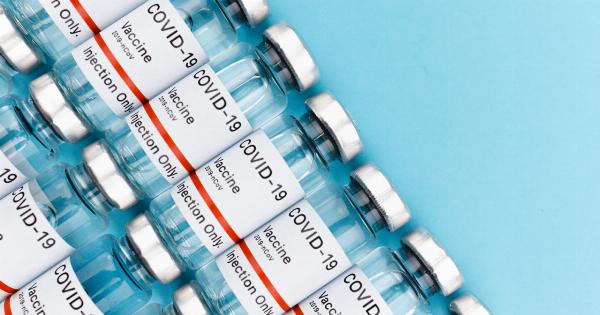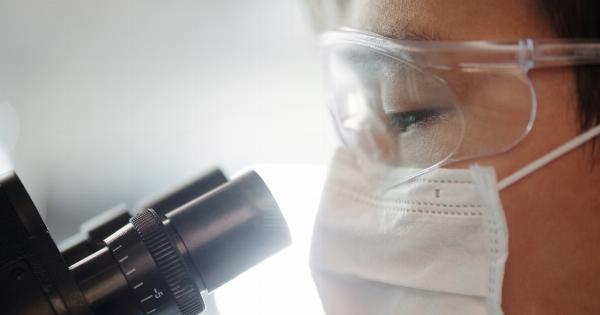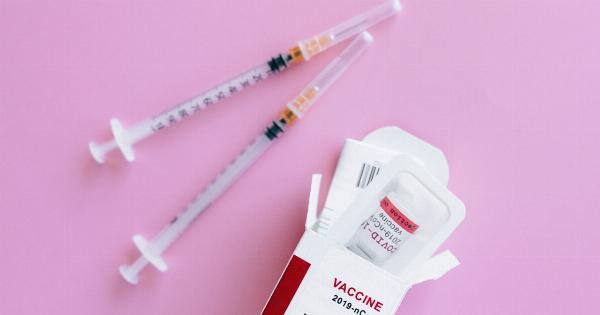Asthma is a chronic respiratory disease that affects millions of people worldwide. It is characterized by inflammation and narrowing of the airways, leading to wheezing, coughing, chest tightness, and shortness of breath.
While there is no cure for asthma, there are various treatment options available to manage symptoms and reduce the frequency and severity of asthma attacks. One area of interest in asthma research is the use of regeneration techniques, which aim to repair damaged airways and restore lung function.
In this article, we will explore some of the groundbreaking regeneration techniques being developed for asthma patients.
1. Stem Cell Therapy
Stem cell therapy is a promising new approach to treat asthma by using the body’s own cells to repair damaged lung tissue. Stem cells are unique cells that have the potential to develop into different types of cells in the body.
Researchers are investigating ways to use stem cells to regenerate damaged lung tissue and improve lung function in asthma patients.
There are two types of stem cells currently being studied for use in asthma treatment: mesenchymal stem cells (MSCs) and induced pluripotent stem cells (iPSCs).
MSCs are adult stem cells that can be collected from various tissues in the body, such as bone marrow or adipose tissue. These cells have the ability to differentiate into a variety of cell types, including lung epithelial cells, which are the cells that line the airways.
iPSCs are also adult stem cells, but they are generated by reprogramming skin or blood cells back into an embryonic-like state. Like MSCs, iPSCs have the ability to differentiate into lung epithelial cells and other cell types.
Researchers are currently testing the safety and efficacy of stem cell therapy in clinical trials.
While results are still preliminary, early studies suggest that stem cell therapy may be a promising new approach to regenerate damaged lung tissue in asthmatic patients.
2. Gene Therapy
Gene therapy is another approach being explored for the treatment of asthma. Gene therapy involves the transfer of specific genes into a patient’s cells to correct or replace defective genes that cause disease.
In the context of asthma, researchers are investigating ways to use gene therapy to provide long-term relief from asthma symptoms and prevent asthma attacks.
One gene therapy approach being studied for asthma is the delivery of genes that produce anti-inflammatory proteins directly into lung tissue.
Inflammation is a key component of asthma, and reducing inflammation in the airways can improve lung function and decrease the risk of asthma attacks. Another gene therapy approach involves modifying immune cells to be less reactive to asthma triggers, such as allergens or irritants.
While gene therapy is still in the early stages of development for asthma, it holds promise as a potentially curative treatment for the disease.
3. Immunotherapy
Immunotherapy is a type of treatment that involves exposing a patient’s immune system to small amounts of an allergen over time, with the goal of desensitizing the immune system to the allergen.
While immunotherapy is most commonly used to treat allergies, researchers are exploring its potential as a treatment for asthma.
In asthma, the immune system overreacts to allergens, leading to inflammation and narrowing of the airways.
Immunotherapy aims to retrain the immune system to recognize allergens as harmless, reducing the amount of inflammation and immune response in the airways.
Currently, there are two types of immunotherapy being studied for asthma: subcutaneous immunotherapy (SCIT) and sublingual immunotherapy (SLIT).
SCIT involves the injection of small amounts of an allergen under the skin, while SLIT involves the placement of small amounts of an allergen under the tongue. While both forms of immunotherapy have shown promise in clinical trials, SLIT is generally considered to be safer and less invasive than SCIT.
4. Tissue Engineering
Tissue engineering is a multidisciplinary field of science that involves the creation of functional three-dimensional tissues using a combination of cells, scaffolds, and growth factors.
In the context of asthma, researchers are exploring ways to use tissue engineering to regenerate damaged lung tissue and restore lung function.
One approach being studied is the creation of lung airway scaffolds using 3D printing technology.
These scaffolds can be seeded with a patient’s own cells, allowing for the creation of customized lung tissue that can be transplanted back into the patient. Another approach is the use of decellularized lung tissue as a scaffold, which involves removing the cells from damaged lung tissue while preserving the extracellular matrix.
New lung cells can then be seeded onto the scaffold, allowing for the regeneration of healthy lung tissue.
While tissue engineering is still in the early stages of development for asthma treatment, it shows promise as a potential long-term solution for patients with severe lung damage.
5. Nanoparticle-Based Therapy
Nanoparticle-based therapy is a novel approach being developed for the treatment of asthma.
Nanoparticles are small particles that have unique properties due to their size and can be used to deliver drugs or genetic material directly to target cells in the body.
Researchers are investigating the use of nanoparticles to deliver drugs that reduce inflammation in the airways, such as corticosteroids or anti-inflammatory proteins.
Nanoparticles can also be used to deliver genes that produce anti-inflammatory proteins directly to lung tissue. In addition, nanoparticles can be engineered to target specific cells in the airways, such as immune cells or epithelial cells, allowing for precise delivery of therapeutic agents.
While nanoparticle-based therapy is still in the early stages of development for asthma, it holds promise as a potentially targeted and effective treatment option for patients.
6. Conclusion
Asthma is a complex and chronic disease that affects millions of people worldwide. While there is no cure for asthma, there are various treatment options available to manage symptoms and reduce the frequency and severity of asthma attacks.
Revolutionary regeneration techniques, such as stem cell therapy, gene therapy, immunotherapy, tissue engineering, and nanoparticle-based therapy, are being developed to repair damaged lung tissue and restore lung function in asthmatic patients. While these techniques are still in the early stages of development, they hold promise as potentially curative treatments for asthma, paving the way for a future where asthma is no longer a chronic and debilitating condition.



























